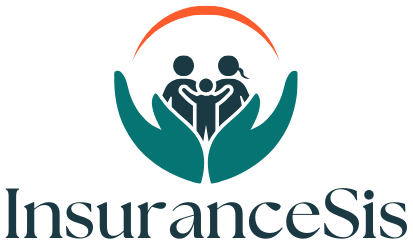
Homeowners Insurance In Ohio: Everything You Need To Know
“I woke up today convinced it was Saturday, only to realize it was, in fact, Wednesday. Talk about disappointment. But hey, at least we get to chat about something fun, homeowners insurance! Okay, maybe ‘fun’ isn’t the word, but trust me, having the right policy can save you a whole lot of stress (kind of like knowing what day of the week it is).”

Homeowners Insurance In Ohio: Everything You Need To Know
A major turning point is having a house, hence homeowners in Ohio must take great care to secure their investment. Designed to protect your property against unanticipated catastrophes including natural disasters, theft, or tort claims, homeowners insurance Whether you live here long-term or are a first-time buyer, knowing Ohio homeowners insurance will guide your options.
The main features of home insurance, including coverage choices, pricing, legal requirements, and strategies for obtaining the best policy for your circumstances, are examined in this article.
Common Perils Covered By Ohio Homeowners Insurance
Climate and location affect the particular hazards Ohio residents experience. The following hazards are covered most typically by conventional homes insurance:
- Fire and smoke damage
- Windstorms and hail
- Theft and vandalism
- Lightning strikes
- Water damage from plumbing or appliance leaks
- Explosions
Some hazards, including flooding and earthquakes, however, call for further coverage from separate policies or endorsements.

What Does Homeowners Insurance Cover in Ohio?
Ohio homeowners’ insurance plans usually cover a range of hazards that can compromise your house or finances. The basic policy comprises several important safeguards:
This section of your insurance policy covers the physical construction of your house, including the foundation, walls, roof, and built-in appliances. Should a covered risk, such as a fire, storm, or vandalism, cause damage to your house or apartment, housing coverage covers rebuilding or repair expenses.
Personal property coverage covers your personal items, furniture, electronics, clothes, other valuables. Should covered hazards cause damage or theft of things, your insurance can assist in replacements. Several insurance companies provide extra coverage for valuable objects like collectibles or jewels.
Should someone be injured on your property or if you unintentionally damage someone else’s property, liability coverage guards your finances. This coverage includes legal fees and medical bills should a lawsuit arise. Liability insurance is particularly crucial for Ohio house owners to guard against such lawsuits.
ALE coverage covers interim lodging and other required expenses should a covered peril render your house uninhabitable. While your house is being rebuilt. This can include lodging, meals, and rentals.
This coverage protects detached structures on your property, such as garages, sheds, fences, and guest houses. If these structures suffer damage from covered perils, your policy helps pay for repairs or replacements.
How Much Does Homeowners Insurance Cost In Ohio?

The cost of homeowners insurance in Ohio depends on several factors, including location, home value, coverage limits, deductible amounts, and personal risk factors.
On average, homeowners in Ohio pay around $1,000 to $1,500 per year for their insurance policy. However, premiums can vary based on specific circumstances, such as:
- Location: Areas prone to severe weather, flooding, or high crime rates may have higher premiums.
- Home Age And Condition: Older homes or those with outdated electrical or plumbing systems may have higher insurance costs.
- Credit Score: Insurers in Ohio use credit scores to determine risk levels, with higher scores typically leading to lower premiums.
- Coverage Limits: Higher coverage limits mean more protection but also lead to increased premiums.
- Deductibles: A higher deductible lowers your premium, but you’ll pay more out-of-pocket in case of a claim.
Ways To Lower Homeowners Insurance Premiums?
Ohio residents can follow many actions to lower insurance premiums while still keeping sufficient coverage:
Bundle Policies: If you combine your homeowners insurance with auto, life, or another kind of policy, several insurance companies grant savings.
Improve Home Security: Installing reinforced doors, smoke alarms, and security systems can reduce your risk and might qualify you for discounts.
Raise Your Deductible: Choosing a bigger deductible lowers your rate. Make sure you can, however, pay the out-of-pocket cost should a claim be filed.
Maintain A Good Credit Score: A better credit score will enable you to get cheaper insurance. Managing debt and paying bills on schedule help to raise your credit score.
Shop Around For Quotes: Looking at several insurance companies guarantees the greatest offer. To get the most all-encompassing coverage at a reasonable cost, look at both national and local insurers.

Ohio-Specific Insurance Regulations
Although Ohio does not have a legal mandate for homeowners to have insurance, mortgage lenders usually demand coverage as loan conditions. Oversaw the sector and guarantee that insurers follow state rules, the Ohio Department of Insurance Reviewing state rules and consumer protections will help homeowners decide on their policies with knowledge.
Special Considerations For Ohio Homeowners
Flood Insurance: Periodically, Ohio floods, particularly in low-lying places. For at-risk homeowners, buying a supplementary flood insurance policy either via the National Flood Insurance Program (NFIP) or private insurers is advised since standard homeowners insurance does not cover flood damage.
Tornado And Windstorm Coverage: Severe windstorms and tornadoes are hazards Ohio faces. Although most homes insurance policies cover wind damage, some may have exclusions or need special endorsements. Reviewing your policy guarantees sufficient defense against these natural disasters.
Winter Weather Protection: Property damage can result from extreme snowfall, ice storms, and low temperatures. Ohio homeowners must make sure your coverage addresses ice dams, roof collapses, and damage from frozen pipes.


Choosing The Right Homeowners Insurance Provider
Getting the finest coverage requires careful choice of a trustworthy insurance company. Think on the following while selecting an insurer:
- Reputation And Financial Strength: Research customer reviews and financial stability ratings to ensure the company can handle claims effectively.
- Claims Process: A smooth and efficient claims process is essential for quick recovery after a loss.
- Coverage Options: Look for customizable policies that fit your needs.
- Discounts And Savings: Ask about available discounts for bundling, security systems, or loyalty programs.
Conclusion
Protection of your house, personal items, and financial stability depends on Ohio homeowners insurance. Knowing coverage choices, expenses, and possible savings can enable homeowners to find the best policy for their situation. Ohio residents can make sure they are sufficiently covered against possible hazards by keeping educated about state-specific hazards and rules.
FAQ
Although mortgage lenders typically demand it to preserve their financial interest in the property, homeowners insurance is not legally required in Ohio.
Standard homeowners’ insurance does not cover flood damage. Homeowners have to buy separate flood insurance either from NFIP or private companies.
Bundling policies, enhancing home security, raising deductibles, keeping a strong credit score, and looking around for quotes help homeowners cut rates.

